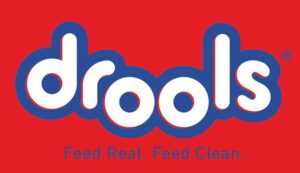Decode nutrition with commercial kibble vs home cooked delights
Choosing the right diet for our canine companions is a crucial decision for pet parents, and the debate between commercial kibble and home-cooked food is at the forefront of this consideration. Find out how kibble takes a step higher in terms of advantages.
–by
 While both options of commercial kibble and home cooked food have their merits, commercial kibble often stands out as a practical choice for various reasons. In this comparison, we delve into the advantages of kibble over home-cooked food, exploring factors such as nutritional balance, suitability for different life stages, time efficiency, cost-effectiveness, dental health benefits, and the availability of special diets for certain conditions.
While both options of commercial kibble and home cooked food have their merits, commercial kibble often stands out as a practical choice for various reasons. In this comparison, we delve into the advantages of kibble over home-cooked food, exploring factors such as nutritional balance, suitability for different life stages, time efficiency, cost-effectiveness, dental health benefits, and the availability of special diets for certain conditions.
Tail wagging wellness with balanced diet
Commercial Kibble– Reputable brands of commercial kibble are meticulously formulated to offer a balanced diet for dogs. Rigorous testing ensures the inclusion of essential nutrients like proteins, fats, carbohydrates, vitamins and minerals in the right quantity.
Home-Cooked Food– While home-cooked meals provide a degree of ingredient control, achieving a perfectly balanced diet demands meticulous planning and nutritional knowledge. Crafting such a diet can be challenging for pet parents without a background in canine nutrition, risking nutrient imbalances or deficiencies.
From paws to prime – tailored nutrition for all life stages
Commercial Kibble– Many commercial kibble brands offer specific formulas tailored to different life stages, such as puppy, adult, and senior. This adaptability addresses the changing nutritional needs of dogs throughout their development, supporting optimal growth, maintenance, and overall well-being.
Home-Cooked Food– Crafting a home-cooked diet that meets the specific requirements of different life stages demands careful consideration and ingredient adjustment. While achievable, achieving the same level of precision as commercially formulated life stage kibble can be challenging for pet parents.
Time tactics
Commercial Kibble– Kibble excels in terms of convenience and time efficiency. It requires minimal preparation – simply measuring the appropriate portion and serving. This convenience is particularly beneficial for busy pet parents with limited time for meal preparation.
Home-Cooked Food– Preparing home-cooked meals involves planning, shopping for fresh ingredients, and cooking, making it time-consuming and impractical for individuals with hectic schedules. The additional effort required for home-cooked meals can be a limiting factor for those seeking a more efficient feeding routine.
 Budget bites with cost effective kibble
Budget bites with cost effective kibble
Commercial Kibble– In many cases, feeding a dog commercial kibble is more cost-effective than preparing home-cooked meals. The mass production of kibble allows for economies of scale, making it a more affordable option especially when considering the convenience it provides.
Home-Cooked Food– Crafting home-cooked meals often involves purchasing fresh, quality ingredients, which can be more expensive than the bulk production of commercial kibble. Additionally, the time invested in preparation adds another dimension to the overall cost, making home-cooked diets potentially pricier.
Taking care of those pearly whites
Commercial Kibble– Certain formulations of commercial kibble are designed to promote dental health. The chewing action required to consume kibble can help reduce plaque and tartar buildup, contributing to better oral hygiene in your furry friends.
Home-Cooked Food – While home-cooked meals can include items that promote dental health, achieving the same level of dental benefits as specific kibble formulations might require additional considerations and planning.
Special diets for special conditions
Commercial Kibble– Whether it is golden years gourmet, dental delights, cardio canines, or tailored tummies, you are sure to fine a kibble for various health conditions. Reputable kibble brands offer prescription diets formulated to address specific health concerns like kidney disease, urinary issues, or food allergies. This targeted approach provides an effective means of managing certain conditions.
Home-Cooked Food– Crafting a home-cooked diet tailored to specific health conditions demands extensive knowledge in canine nutrition. If pet parents don’t have the right knowledge, it can be a challenge and next to impossible to match the level of experts.
Spoilt for choices
Commercial Kibble– The market offers a diverse array of kibble options, catering to various dietary preferences, sensitivities, and breed sizes. This variety allows pet parents to choose formulations that align with their pet’s specific needs and taste preferences.
Home-Cooked Food– You can customize home-cooked meals, but achieving the same diversity in nutritional options can be challenging. It requires careful planning and a deep understanding of canine nutrition to ensure a varied and balanced diet.
Shelf symphony
Commercial Kibble– Designed for a long shelf life, commercial kibble is easy to store without the risk of spoilage over time.
Home-Cooked Food– Generally, home-cooked meals have a shorter shelf life due to the absence of preservatives and the use of fresh ingredients, necessitating refrigeration or freezing.
While both commercial kibble and home-cooked food have their advantages, commercial kibble often emerges as a preferred option for many pet parents due to its convenience, precise nutritional formulations, suitability for different life stages, and cost-effectiveness. However, individual circumstances, including pets’specific health needs and pet parents’ lifestyle, should be considered when making an informed decision. Consulting with a veterinarian can provide valuable insights tailored to the unique requirements of your beloved pet.
(Dr Likith C Y – Veterinary Product Executive)

